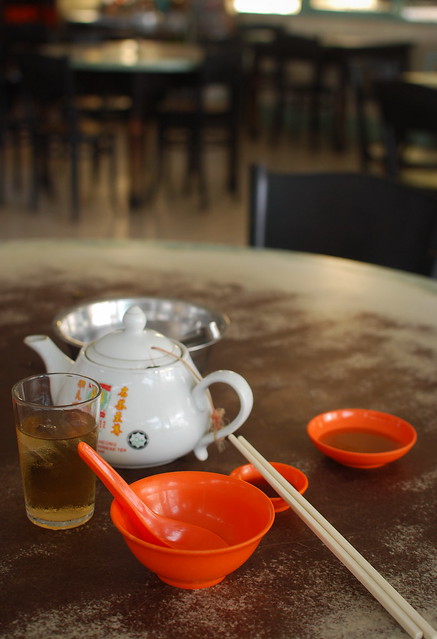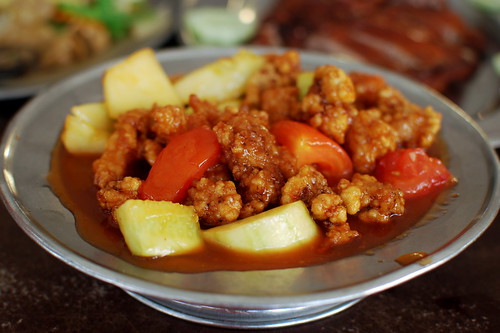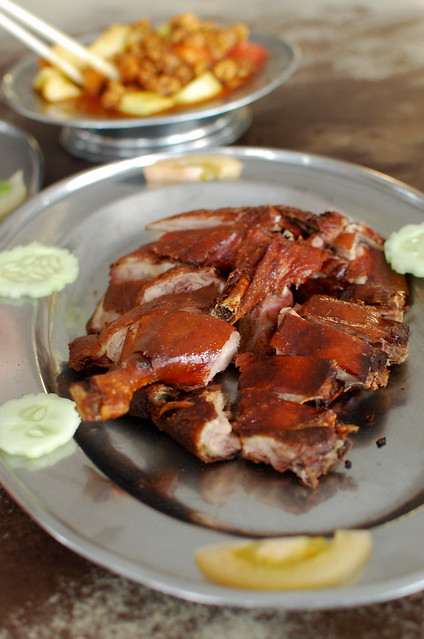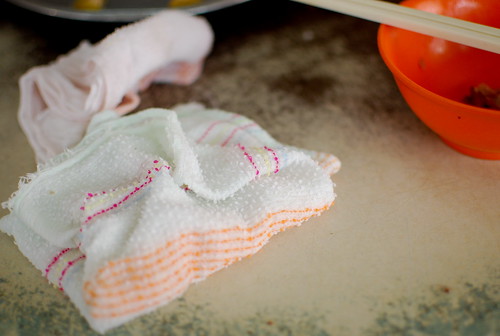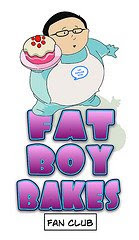
I've heard of Area 51 but not the Tianluokeng tulou cluster. It's a shame, really. The former being absolutely geographically unrelated to my origin while the latter represents a cultural heritage of a Chinese clan that I belong to. Partially, to be exact, as I'm also half Cantonese. I'd survived from being a completely lost half Hakka by my fundamental knowledge of Hakka food, thanks to a maternal family that requires, among other delicacies, char zhu yuk (fried pork braised with fermented red beancurd and earwood fungus) and radish/dried oyster soup on those significant Chinese celebrations.
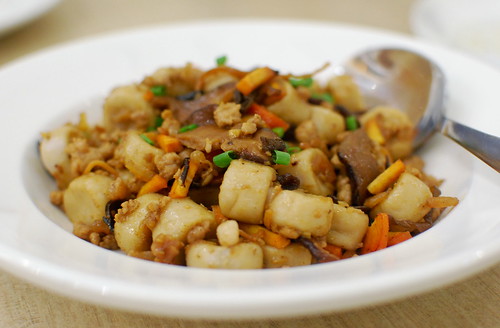
At the table, as we gazed at the beautiful photograph of the tulou cluster hung near the entrance, Sook told Ivan and I about her previous visit there. To be honest, that was the first time I'd ever heard of this extraordinary settlement. The photogragh showed houses with terracotta roofs joined to form a circular enclosure. They were behemoth. That's when UFOs, Area 51 and unexplained crop circles came to mind. It was definitely a good conversation piece.
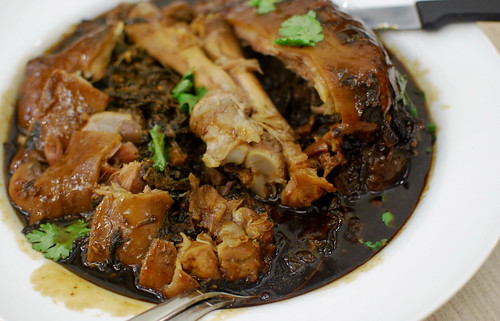
The food at Linda's reminded me of the Hakka dishes that my mother would make daily - simple, delicious stir-fries using preserved ingredients like dace and vegetables. Of course, here, these dishes are given a more refined and visually-appetizing interpretation, without compromising, by my own standard, the taste and authenticity.
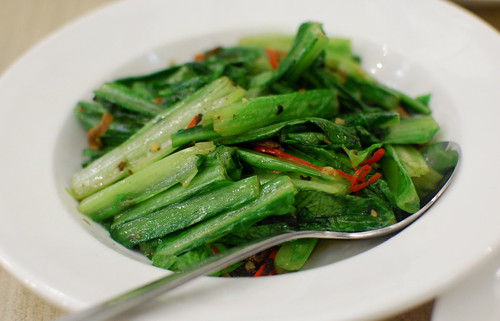

To replace the usual fu yu or fermented beancurd with dace to pair the romaine lettuce was nostalgic. And tasty. This, to go with just a bowl of plain congee would have been great as well. The preserved vegetables we get these days are salty, just. I miss the slightly sweet type, which really adds a flavourful dimension to the dish. Sourced from China, that's the type that Linda's using for the stewed pork trotter. Good stuff! I shouldn't forget the flaky pork trotter with the collagen dissolving into a gelatinous sauce, which goes to show how well-cooked the trotter was. Interestingly, I've never been familiar with the yam gnoochi (or abacus), despite it being a Hakka signature. Perhaps I was more of a turnip/shitake mushroom dumpling kind of Hakka. Linda's version, I have to say, was special. Instead of bandwagoning the typical springy texture, it came soft, almost melting. A classy act that didn't come too oily but equally aromatic and flavourful. There was also a sambal bee hoon presented with a layer of burnt crispy contrast to the smooth, soft strands of the right choice of rice vermicelli. Seriously, you'll be surprised to know that there are many out there misusing the different types of bee hoon. Oh, I should also mention the velvety serving of almond pudding to end the meal.
This was supposedly a planned Korean dinner but I'm sure glad we headed here instead. I'd learned quite a bit that evening, including the names of some infamous Australian restaurants from the company of wonderful food enthusiasts, that there is a cosy restaurant in town that's passionate about Hakka food and the Tianluokeng tulous.
Hakka cuisine is not as celebrated as its Cantonse and Hokkien counterparts. The truth is, there is much more than thunder tea, yong tau fu and salt. And you'll see it in Linda's menu.
Linda's Home Kitchen
206, Telok Ayer Street
Singapore 068641
Tel: (+65) 6284 7272

